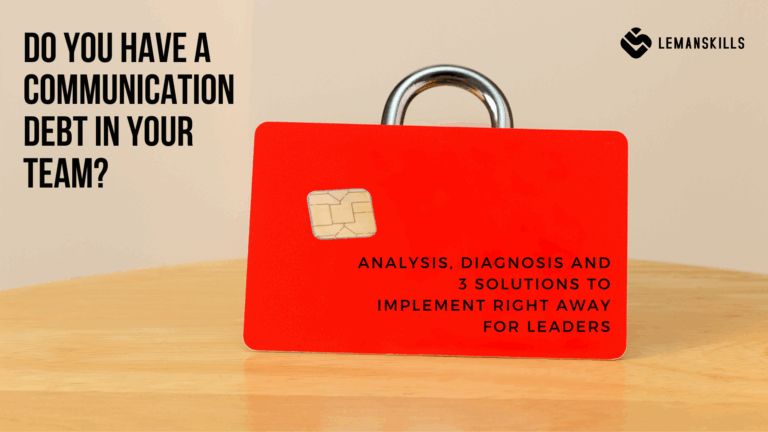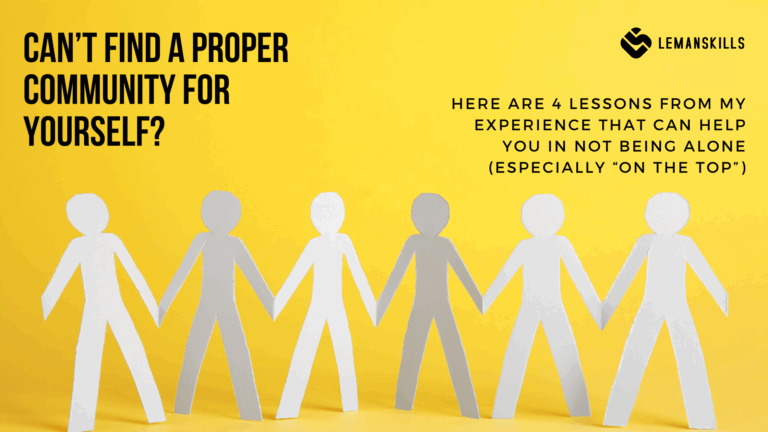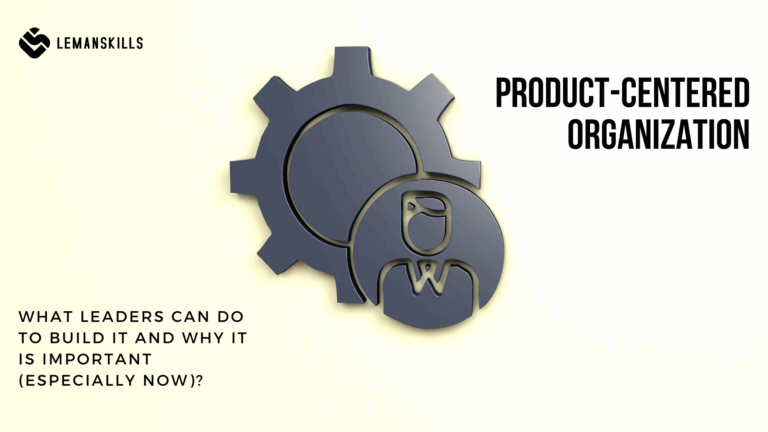Do you know at least one person that always has an opinion on a given subject? That has a strong set of values and that is the base of most of the decisions that they make? The person that is trustworthy: when they say that something is going to be done, it will, 100%? That’s Persister.
First out of six personality types in Process Communication Model (PCM), the concept created by Taibi Kahleb. You can read shortly about the concept HERE, to have a basic structure around what PCM is really about.
Today, I would love for us to have a description of who the Persister is, how we recognize this type is in the other person’s Base. Meaning that it is their first floor of personality structure, where they have most of the resources, competencies, and skills. The Base also stands for what is the most natural way of communication for the other person and through what kind of lenses they observe the world. So today we are going to discover who the Persister is, how to navigate when this person is in front of us and what to do to communicate effectively.
How do we recognize Persister?
Persister is a person who evaluates the world around them by comparing it to their values and beliefs. Their perception is opinions, and a lot of situations with Persisters relate to comparing one thing to another. How they feel, how they think and how they operate daily against the law, rules, policies, ways of working. While being around people, they’re loyal, and they value trust. They always keep promises: for a Persister it is impossible to even think about not keeping the word. If they say they do something, they are going to do it, no matter what. So, we don’t need to ask them several times a question like: “Are you going to go to do it? What is the progress of it?” because they’ll always do it (in fact, that kind of questions drive Persister crazy).
How to recognize this person if that we don’t have their personality structure yet? You can listen to the words they need.
For Persister it will be: “I believe…”, “in my opinion…”, “we should do something” or …shouldn’t do something”, “I trust…”, “the important thing for me is…”, “the crucial thing is…”.
They say those words because they see the world through the lenses of opinions and values: that’s how Persister is the most visible. Of course, we are talking about being in OK-OK zone. It’s about having an opinion, but also always having a good intention. It’s not about pushing the opinion no matter what or aiming to hurt others.
They have an opinion on every single subject and even if they don’t (i.e., they’re not interested in something), they have an opinion on it. Like: “Ok, so I’m not into politics because it really doesn’t interest me: I don’t want to waste my time on that subject”. Based on that example, we can see that there is always an opinion, even if at the first sight there’s none. What is also important that Persister doesn’t have any problem with saying those opinions out loud. And it’s not about being rude: it’s about being persistent, having a voice that matters (in professional and/or private life). Of course, HOW the opinion is communicated is important (it needs to be said from the OK-OK perspective). If it’s not – it’s another part of the story.
What do Persister need in communication?
- The Persister needs communication process where they have a chance to express their opinions. Extremely important for them as well is to have a partner to exchange the opinions with.
- To be efficient in communication with Persister, we need to use requestive channel of communication. That means that we need to ask questions about their opinion on certain subjects. For example, when we want to delegate a task, so a chosen employee covers it, the great approach will be telling them about it and then ask about their opinion on it. “Okay, here is a task X, what’s your opinion on it? What do you believe is important to complete it efficiently? What kind of value we can bring by covering this task together?” Asking that kind of questions is something that we can do to get in contact with Persister. Once they are on board, we can talk about the details (scope, deadline, support, required learning etc.).
- They value Democratic interaction style. It means that they are really good in making decisions in cooperation with others. They like discussions, brainstorming sessions, they value feedback. And the worst thing that we can do while getting in contact with Persister is to use directive communication channel. Telling them what to do without even asking is something that they hate. When they have an autocratic person on the other side of the conversation, they go into aggression behaviors. By being in that zone there is a huge possibility that they’re going to attack other people. So democratic interaction style and requestive communication channel is a key to success in getting on the same page with that person.
- Persister seek to answer the existential question: am I trustworthy? It’s good to feed that question, especially when we see that Persister is under some kind of stress or pressure. For them the following equation is the only truth.
I’m trustworthy = I’m valuable as a person
- Motivational needs attached to this PCM type are recognition of principled work and recognition of conviction. It’s important to know it, since when those needs are not met, Persister goes into distress and loses access to their skills, abilities to think clearly. Recognition of principled work means that we are seen as people for what we deliver at work and this delivery is compliant with the rules, ways of working in a certain organization, that is done by the book, or in alignment with a certain process or structure. Recognition of conviction means that we are appreciated with our values, opinions, and beliefs about a given topic. We can feed both of those needs by emphasizing what this person did – not who they are (this is the need of Harmonizer), but what they delivered, by being focused on those two criteria.
When do we know that Persister is in distress?
What does to be in distress mean? Being a distress means that we don’t have our motivational needs covered and we go into a sequence that is aligned with certain PCM type. So, if you have a Persister on the other side of the communication process and their needs are frustrated, they go into distress, you will see 3 steps of the sequence.
- Driver: you need to be perfect for me. On the first level of distress, Persister will focus on things that are not good enough, somehow not perfect enough. They will be more into looking for mistakes, than appreciating the things that are done well. We can observe using big, complicated words, or asking complex and difficult questions. When we see that kind of behavior, we can offer recognition, and then proper, requestive communication channel and perception of opinions (i.e. “I respect your work aligned with the highest standards. I know that thanks to that our team scores results that are above average. What is your opinion on an approach X that I invented to do it faster, without losing our quality?). BOOM! We’re going back to OK-OK zone and we can talk with access to the whole Persister’s skillset.
- Attacker Mask. If we don’t stop the driver, we go into the second level of distress, which is the mask. On the first level it’s quite easy to take the person out of it, but on the second level is not a piece of cake. Like in a real life: when a person has a mask on their face, sometimes it’s even hard to recognize them. No bueno. Persister with a mask on attack others for not having “proper’ values and live by them i.e. “You don’t care about out customers!” or “You should be more committed!”. They can push their believes on others, treating it like one and only. When we see that kind of behavior, the approach is the same as in the driver situation: addressing the corresponding motivational needs.
- Cellar: Despair. It’s time for a payoff. The first and second level of distress convinced Persister that everything and everyone is hopeless. There are no people with values, nobody cares about work according to the principles, processes, and ways of working that are important to have the highest quality of deliveries. Solution? Still the best invitation to come back to OK-OK zone is to offer covering the corresponding motivational needs. It can be extremely hard, yet doable. And we need to remember that the decision about accepting our invitation or not is on the other person, not us.
Being in distress means that we don’t think clearly. When it happens, we don’t have access to our skillset, abilities to deal with different (especially stressful and difficult) situations, we can’t act accordingly (even if we rationally know how to do it). That’s why it’s so important firstly to come back to OK-OK, to our Base, and then – once we are there, go and deal with the situation. That kind of approach is always going to work, regardless of the PCM type. It’s worth to remember the sequence, since it is repetitive. By training ourselves in recognizing patterns we train our muscle of reacting accordingly, without going into distress ourselves. The mask invites the mask: meaning that behavior under distress will have influence on us, and even if we are in OK-OK zone, we can go into the dark side. Being aware of what’s happening gives us tools to protect ourselves and support others in getting into better place.
The bottom line
Persister is a great person to cooperate with. When they say that they’ll do something, we can be sure that will happen, no matter what. We don’t even need to doublecheck: for Persisters it’s impossible to not deliver the things that we agreed on, it’s in their DNA to do it. Their strong principles, values, and a high-level need to be trustworthy make them great partners in crime.
Of course, while being in distress, they lose access to those resources and go into not so shiny place. It requires more awareness, being mindful what happens with us (if we are Persisters in Base), and other people (when Persister is on the other side of communication process). So, I invite us all to observe those behaviors described in the article starting today. It can help us more than we think, regardless of the type of relation, context, or situation that we are in. It’s always worth to develop in this area.
PS. As a first exercise after reading this article, you can count how many times I expressed an opinion throughout the whole text (my base is Persister, so it should be quite visible).




